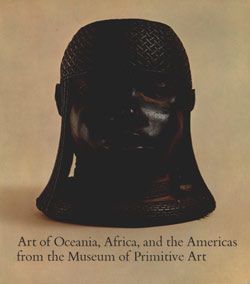Dagger
Not on view
Daggers were common weapons among Tlingit men who used them for raids, revenge attacks, and in a form of staged combat. Ever since they were first seen by Europeans in the late eighteenth century, they have been much admired for their sculptural pommels worked in a variety of materials often showing aggressive animals or people, sometimes interacting with each other. The handle of this dagger is of carved ivory in the form of a bear's head surmounted by a bird's head, perhaps that of a raven. The eyes, teeth, ears, and nostrils are inlaid with abalone shell. The hide thong wrapped around the top of the blade assured a secure grasp in battle. Daggers became important heirlooms related to chiefly office.
In the late 1940s to early 1950s, when Rockefeller began seriously purchasing for his collection, Native North American art was included. Advised by René d'Harnoncourt, who served as general manager of the Indian Arts and Crafts Board, Rockefeller bought a number of desirable works during this period, such as this Tlingit dagger. It is one of the few objects to appear in d'Harnoncourt's <em>North American Notebook</em>. Shown with other Native American works in the first display of non-Western art associated with Nelson Rockefeller's name at the Century Association in 1953, it was kept in his New York apartment until 1959 when it was lent to the Museum of Primitive Art.
Due to rights restrictions, this image cannot be enlarged, viewed at full screen, or downloaded.
This artwork is meant to be viewed from right to left. Scroll left to view more.





